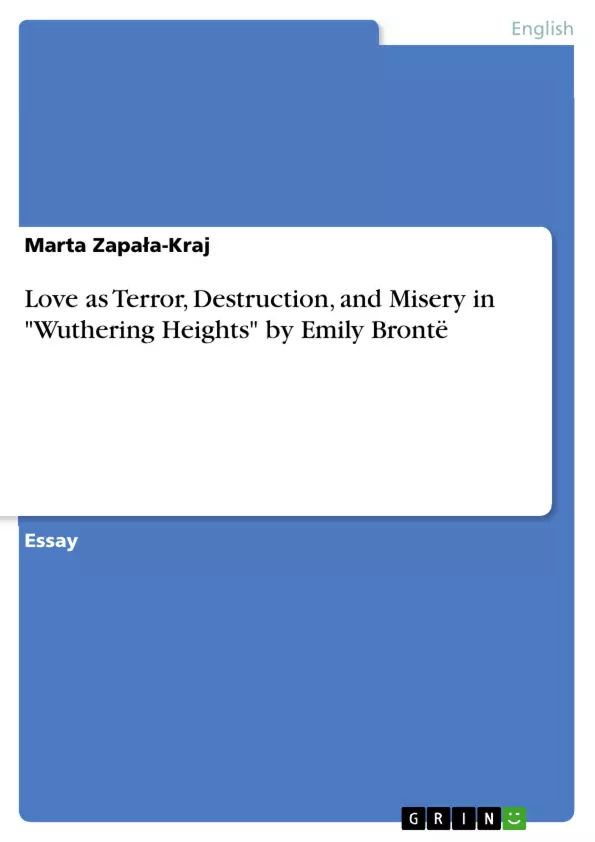This paper refers to numerous faces that love takes in the novel "Wuthering Heights" by Emily Bronte. The aim of the paper is to analyze the various aspects, described by Emily Brontë as love, which in fact, lead to terror, destruction and misery for most of the characters.
Emily Bronte’s "Wuthering Heights" of 1847 had an amazing impact on novelists to come and with the moment of its appearance, it is said to have revolutionized the gothic genre. Sadly, Emily did not live long enough to enjoy its effect. The first of many new editions was issued in 1850, two years after Emily’s death, it had a preface written by Charlotte who used this opportunity to try to explain to the Victorian readers how such violent subject matter could have been imagined and put into words by her sister.
Adopted by the authors of Gothic literature, the idea of the sublime became a central factor for the Gothic writings, around which all the action is built. As such, the novel "Wuthering Heights" has all of the above mentioned elements –there is no feeling of security, there are tormenting emotions and ruins both of the buildings and of the metaphorical – of love and humanity.
Inhaltsverzeichnis (Table of Contents)
- Introduction
- Chapter One: Emily Brontë - Life, Work and Death
- Chapter Two: Wuthering Heights – the uniqueness of the story
- Chapter Three: The Destructive Force of Love in Wuthering Heights
Zielsetzung und Themenschwerpunkte (Objectives and Key Themes)
This paper explores the destructive nature of love in Emily Brontë's novel, Wuthering Heights. The analysis delves into various forms of love depicted in the novel, examining their impact on the characters and their ultimate consequences.
- The influence of Emily Brontë's life and personality on the creation of the novel.
- The role of romanticism and Gothicism in shaping the narrative of Wuthering Heights.
- The exploration of the destructive power of love in its various forms, including passionate love, obsessive love, and familial love.
- The impact of the natural world and its environment on the actions and motivations of the characters.
- The portrayal of love as a force that can lead to terror, destruction, and misery.
Zusammenfassung der Kapitel (Chapter Summaries)
Chapter One, titled “Emily Brontë - Life, Work and Death,” focuses on the author's life and character, exploring her eccentric nature and her withdrawal from society. It examines how her personal experiences and the cultural context of her time might have influenced the creation of Wuthering Heights.
Chapter Two, “Wuthering Heights – the uniqueness of the story,” delves into the novel's stylistic elements, analyzing the interplay of romanticism and Gothicism in its narrative. It explores the impact of the natural world on the actions and motivations of the characters, highlighting how the environment shapes their lives.
Schlüsselwörter (Keywords)
The primary keywords and concepts explored in this paper include: Emily Brontë, Wuthering Heights, love, destruction, romanticism, Gothicism, character analysis, literary interpretation, and the influence of the natural world. These themes contribute to a nuanced understanding of the destructive forces of love in the novel and the impact they have on the characters.
- Quote paper
- Marta Zapała-Kraj (Author), 2019, Love as Terror, Destruction, and Misery in "Wuthering Heights" by Emily Brontë, Munich, GRIN Verlag, https://www.grin.com/document/591359



